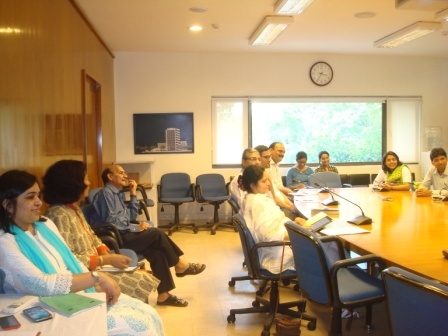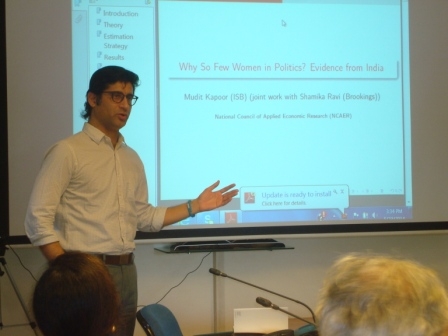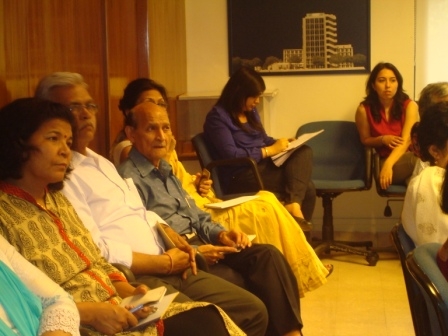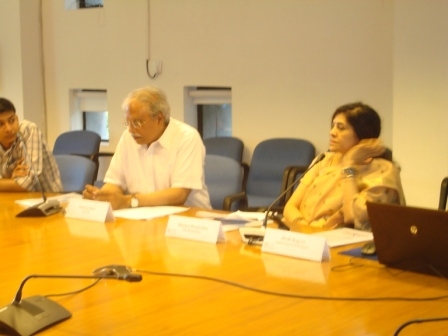Why So Few Women in Politics? Evidence from India
23 May 2014
Past Event
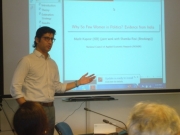
Women remain severely under-represented in political institutions across the world. The International Political Science Association reports that as of January 2013 women representatives accounted for just over 20 percent of all parliamentarians in the world. Set against the just-completed largest election in the world in India, it is useful to ask why are there so few female representatives in political positions relative to their share in the population and electoral rolls? The gap between men and women has narrowed least in political representation when compared to the gaps in education, legal rights and economic opportunities. Despite the magnitude of the problem, there is little definitive understanding of the factors that might be causing this. Mudit Kapoor discussed his recent study for India, done jointly with Shamika Ravi, on women as political candidates in a representative democracy. The study analyzes data from 50 years of assembly elections at the constituency level from the states of India. The seminar provided a platform for some very interactive discussions led by Dr Maitreyi Bordia Das, Lead Social Development Specialist at the World Bank, Washington, D.C. who was invited at the discussant.







